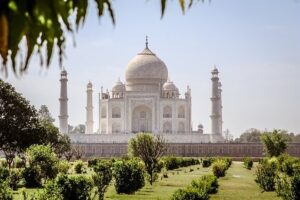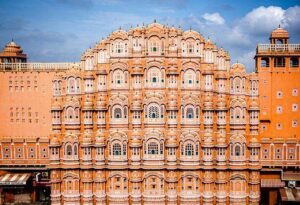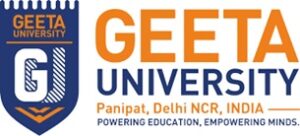About India

India is situated in south East Asia. With an area 3.2 million km2 and population of 1.3 billion it is the largest and most populated country in south Asia. India is one of the most beautiful lands in this sub-continent. The country is well known for its Art and culture. New Delhi is the capital and Mumbai is the largest city of India.
India has a history of ruled by many empire most notably the Mughal Empire. They ruled over entire India for 200 years in peace leaving many legacy and luminous architecture. However it was ended when British Empire took over during 1858. After centuries however nationalist movement emerged and end British rule in 1947.
India has many states and every state has its own art and culture. Taj Mahal which is regarded as one of the seven wonders is located in India. Besides the country has many heritages. The people from all over the world come to India to witness the beauty, art, and culture.
The tourist will get a wonderful experience after coming to India. India is also known for its sports. Cricket, Hockey, Kabaddi, Badminton and many other games are popular in India. India is rich for its classical music and dance. The country is rich in every aspect.
Best Reason to Live in India

Biodiversity
Some of the most biologically diverse regions of the world are in India. The eco zones found in India vary from mountains to plain land; deserts to snowy valleys; marshy swamps to undulating grasslands.
The flora and fauna of India are truly remarkable. India prides herself for harboring animals like the Royal Bengal Tiger, Indian wolf, Bengal fox, striped hyena, golden jackal, macaques, mongooses and langurs.
Food
Because of the nation’s extensive diversity, people’s culinary preferences vary widely. The Indian cuisine is known to be one of the richest in the world. It encompasses a wide variety of traditional and regional cuisines of native India.
Owing to the wide variation in soil types, climates, terrains and cultures spread out across the land, the types of vegetables, fruits and spices grown and animals reared in different parts of the country vary widely too. From the spicy, robust flavors of Punjab to the subtleties of South Indian cuisine – there is an array of options to choose from.
Family life
Unlike the system in the west, the unitary family system is not too popular in India. Indians prefer living with their families; they take care of their parents after they get old and sick.
The sense of belonging and the thought of being close to one’s roots are still very dear to every Indian. Indians gave birth to the idea of ‘atithi-devo-bhava’ – that guests are equivalent to God and are firm believers of the same. They treat every guest with respect and devotion worthy of the Gods.
Lifestyle
Punjabis, Bengalis, Marwaris, Guajaratis, Biharis, and Assamese – these numerous ethnic groups have their own sets of beliefs, conventions, customs and lifestyles. Different cultural groups in India dress differently, have different cuisines, talk in different languages and adhere to different customs. But, at the end of the day, they are united by their nationality. Lifestyles all across the nation vary widely, yet we are all one essentially.
Cheap service
Poverty is a curse and a boon for the people of our country. The latter may be hard to believe and even shocking to some extent, but poverty has laid down the foundation for cheap labor and employment in the country.
Now, whether that is economically beneficial for the country or not is rather debatable. But the fact remains that for the middle and upper classes, cheap labor arising from poverty has facilitated comfortable living unlike in first world countries where getting someone to do your household work or drive your car turns out to be quite expensive.
Education
Starting from Aryabhatta to Ramanujan, from Jagadish Chandra Bose to Amartya Sen, India has given birth to the brightest of minds in the world whose path-breaking work has given the world new direction; new perspective.
The Indian Education System is primarily known for its competitive nature which does give the excellent students here an edge over those from other countries. Even today, most scientists, engineers, doctors and people working in other sectors abroad are primarily Indians.
Today the CEOs of several top companies globally are Indians with the likes of Satya Nadella and Sundar Pichai making it to the top in Microsoft and Google. Despite the competitive nature, living in India and being a part of the education system will give you or your children an edge over their peers outside.
Religion
A country with such diversity can never comprise of just one religion. It has people from more than 6 religions and is also the birthplace of four major religions in the world – Islam, Sikhism, Buddhism, Jainism and of course, Hinduism.
As rightly mentioned in the constitution of India, India is a secular country and every person has the right to practice his or her own religion. Although a few extremist parties and fringe groups create unnecessary chaos from time to time, the society and the ordinary man welcome everyone with open arms.
Richness of Culture
India is comprised of 29 States and 7 union territories. Over 1652 languages are spoken in the country with more than 645 indigenous communities. Every state has its own official language and numerous communities co-existing in harmony.
Every village in India has its own story, its own beliefs and own means of livelihood. Culture, as a tool, when used in the right direction, paves the way for a unique and prosperous lifestyle for these people where their tradition is preserved.
In a world where countries are always on the brink of waging wars against each other and radical thoughts are on the rise, India is the ideal place to preach unity in diversity and to portray culture in the most rational way possible.
Heritage
Tangible and intangible heritage preserved in the most natural way is what makes India such an interesting country. With the birth of so many religions in India and the past reign of numerous dynasties, India is the heart of heritage.
While monuments and buildings undoubtedly contribute to the beauty of the country, the traditions of various tribal communities remind us of our past. Textiles, metal casting, wood-carving, handicraft and other forms of craft that have been developed using primitive techniques are practiced even today by tribal communities, thus promoting these places as indigenous cultural hubs.
Study in India from Bangladesh
Study in India has become a major choice for students. India has vastly developed its education system. Every major area of education like science, technology, arts has gain world class recognition. International student can study here with up to 100% scholarship. Even without scholarship cost of living and study is considerably cheaper than many western country.
Top Reason to Study in India from Bangladesh
Top Ranked University
Indian university ranking are gaining rapidly and very soon they will be in per with some of the top rated university in the world. Due to fears competition and strict regulation by Indian state and central government Indian university has to maintain a high standard in providing education.
Less Immigration Complication
Unlike most of the western country where immigration is a major turn off point for a prospective students to continue their study in a foreign country. Indian immigration system is much more accessible for student especially for neighboring country like Bangladesh.
Second Largest Higher Education System
India has over 340 university and 17,000 college. It is the second largest on the planet. Providing bachelor’s, master’s and doctoral degrees, the vastness of the Indian higher education system and its global network of students and faculty directly translates to increased diversity and enhanced opportunities for both academic and personal enrichment.
Unique Courses Abound
India’s higher education system isn’t just vast in size; it’s also vast in academic offerings. The country’s rich past and vibrant future mean a breadth and depth of courses are available — from the classic to the cutting edge.
In addition to being exposed to the latest frontiers of science and technology, students also have access to traditional subjects, such as Ayurveda, Sanskrit and Hindi.
Affordable
Compared to many of the world’s finest institutions, India’s low cost of education is a bargain. Additionally, various scholarship, loan, and financial schemes are available to offset the cost. But it’s not just less expensive tuition fees which make studying in English a smart financial choice.
The cost of living in India is also budget-friendly. How much so? According to Numbeo, rents in the US and UK are 509 percent and 456 percent higher, respectively, than in India.
Diversity
This large country offers incredible things to see and do — from the mountains of the Himalayas to remarkable scenic — and often undiscovered — beaches like Goa, Lakshadweep and Andamans.
Rising Economy
India’s economy continues to surge. Not only do experts predict that it will be the world’s third largest economy by 2030, but is also expected to grow at the fastest rate in the decade ahead.
Scholarship in India
The good thing is the Indian Universities offers a scholarship for international students. So they can apply for the scholarship and after getting the scholarship they can study in India for free. Students will get three kinds of scholarships.
The following scholarships are ICCR (Indian Council for Cultural Relations) scholarship, Presidential scholarship and University scholarship. ICCR scholarship is offered by Indian Council. The ICCR scholarship is specially offered for Bangladeshi students.
Bangladeshi students can apply for this scholarship for undergraduate programs and postgraduate programs. They can also apply for Ph.D. in India. The presidential scholarship will help meritorious students who are financially unable to study.
Who can study in India from Bangladesh
India is traditionally rich. Their art and culture attract others. India has been developed by their education. The international students are coming to India every year to study and get a higher degree.
India is open for every student from all over the world. The Bangladeshi students who have passed the HSC examination/O level can apply for undergraduate programs. The students who have completed the undergraduate degree. They can apply for masters.
The students who are diploma graduates can also apply. Moreover, who wants to do a Ph.D. they can also apply. Study in India from Bangladesh is a good decision for Bangladeshi students.














